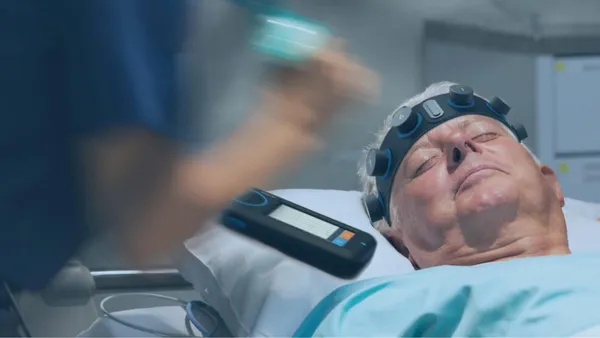Dive Brief:
-
Left atrial appendage closure with Boston Scientific's Watchman device for stroke prevention in atrial fibrillation patients saves money over the long term compared to use of warfarin and non-warfarin oral anticoagulants, a study funded by the device maker concluded.
-
The study, published in the Journal of the American Heart Association, used long-term data pooled from the Protect AF and Prevail clinical trials. The findings confirm those of earlier Protect AF trial-based analyses, the study authors said.
-
Boston Scientific told investors last week it expects the implant to be the only left atrial appendage closure device in the U.S. market for at least the next 18 to 24 months, and the company anticipates to have treated 100,000 patients with Watchman through the end of 2019.
Dive Insight:
The Watchman offers an alternative to clot-preventing blood thinners, which carry a risk of bleeding, for treating patients with atrial fibrillation, the most common type of arrhythmia and a risk factor for stroke.
About 800,000 Americans suffer a stroke each year, and atrial fibrillation is present in about one in five cases, according to the American Heart Association. The device is implanted in a catheter-based procedure on the left atrial appendage of the heart, where it captures clots and prevents them from moving to the brain.
The Prevail study was a follow-up to the Protect-AF clinical trial that demonstrated that Watchman works as well as warfarin in preventing clots that cause strokes. It enrolled more higher-risk patients, such as diabetics and those who were older or had suffered a previous stroke.
The researchers in the cost-effectiveness study concluded left atrial appendage closure is an economically viable stroke risk reduction strategy for patients with atrial fibrillation seeking an alternative to lifelong use of anticoagulation medicine. This is despite an increased risk of ischemic stroke observed in the Prevail trial, the study authors said.
The latest study used a model with a 20-year horizon and clinical event rates and stroke outcomes from the earlier trials. Warfarin and non-warfarin oral anticoagulant data were incorporated from published meta-analyses.
The research found left atrial appendage closure was cost‐effective relative to warfarin by year seven and more effective and less costly by year 10. The device became cost‐effective and dominant compared with non-warfarin oral anticoagulants by year five. In sensitivity analyses, Watchman was cost‐effective relative to warfarin in 98% of simulations and cost-effective relative to non-warfarin anticoagulants in 95% of the cases.
Researchers on the study were Vivek Reddy of the Icahn School of Medicine at Mount Sinai in New York, Ronald Akehurst of the University of Sheffield in the United Kingdom, Meghan Gavaghan of Ipsos Healthcare in Massachusetts, Stacey Amorosi of Boston Scientific and David Holmes of Mayo Clinic in Minnesota.
Watchman is a key product in Boston Scientific’s structural heart portfolio. The company said in March it received CE mark and initiated a limited European launch of its latest version Watchman FLX.
Last month, the company said it had initiated a clinical trial to compare the safety and effectiveness of its next-generation Watchman FLX to anticoagulants and warfarin in patients with non-valvular atrial fibrillation who undergo a cardiac ablation procedure.










